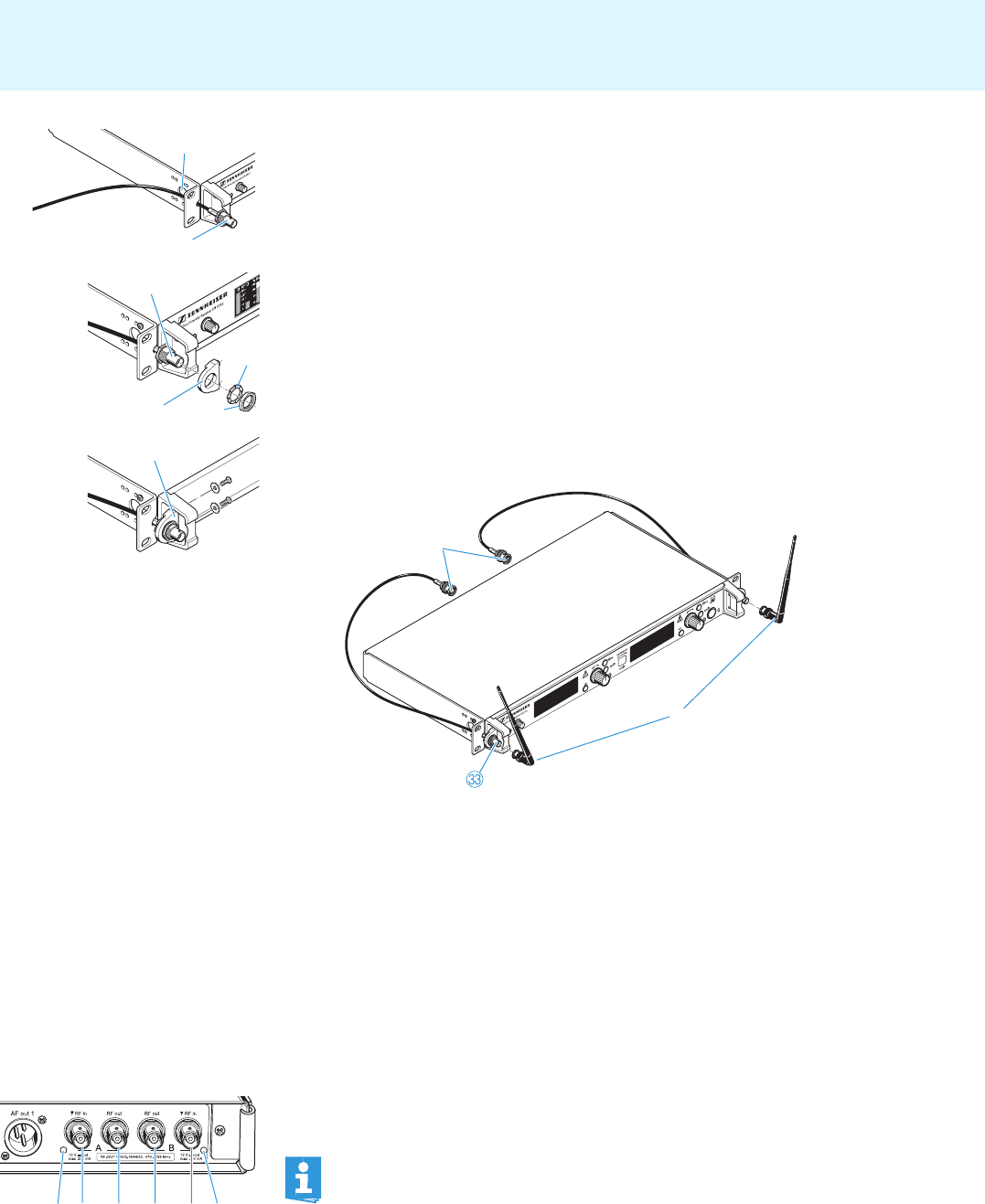
15
Putting the receiver into operation
̈ Unsecure the rack mount “ears” 1 from the rack.
̈ Guide the BNC cables through the holes in the rack mount “ears” as
shown in the diagram on the left.
̈ Screw the antenna holders Z to the BNC sockets W using the supplied
washers Y and nuts X.
̈ Secure the antenna holders Z to the handles of the receiver using two
of the supplied screws respectively.
̈ Connect the two BNC connectors [ to the BNC sockets O and R at the
rear of the receiver.
̈ Slide the receiver into the 19" rack.
̈ Resecure the rack mount “ears” 1 to the rack.
̈ Connect the antennas \ to the BNC sockets W.
̈ Align the antennas upwards in a V-shape.
Connecting and positioning remote antennas
Use remote antennas when the position of the receiver is not the best
antenna position for optimum reception. Remote antennas are available
as accessories.
̈ Connect the remote antennas to the BNC sockets O and R using a low-
attenuation 50-Ω coaxial cable.
̈ If you connect active antennas (e.g. A 3700, AD 3700) or antenna
boosters (e.g. AB 3700), switch on the DC supply voltage for external
active antennas and antenna boosters (see page 31) so that the
LEDs N and/or S light up;
if you do not connect active antennas or antenna boosters, switch off
the booster supply voltage so that the LEDs N and/or S do not light
up.
-II
W
1
Z
W
X
Y
-II
Z
-II
[
\
N
OP
Q
R
S
Ready-made coaxial antenna cables from Sennheiser are available
as accessories with length of 1 m, 5 m and 10 m (see “Accessories”
on page 44).


















